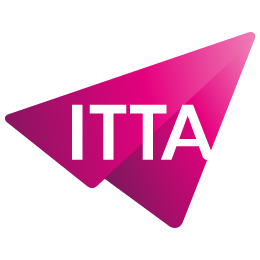Home > Trainings > Soft Skills > Personal efficiency and Organization > Developing Professional Effectiveness
In a constantly evolving professional environment, the ability to manage time and prioritize effectively has become a key factor for success. Deadline pressure, the growing number of tools, and frequent interruptions can reduce focus and impact performance. This training is designed to help participants regain control of their workflow, enhance clarity, and strengthen their ability to take impactful action. It provides practical, immediately applicable methods to improve workplace productivity while maintaining personal balance.
By attending this course, you will learn to identify what hinders your professional effectiveness and transform your habits to create an environment that supports focus. With a pragmatic approach, you will discover how to structure your day, anticipate disruptions, and set clear priorities. You will also develop better command of digital tools to reduce information overload and minimize unnecessary interruptions. This training offers simple and accessible techniques to sustainably improve your organization and productivity.
Module 1: Self-assessment of professional effectiveness
Module 2: Clarifying professional objectives
Module 3: Understanding time wasters
Module 4: Optimizing personal organization
Module 5: Managing interruptions
Module 6: Advanced time management
Module 7: Developing an individual action plan
Professional effectiveness is not only about working faster. It is primarily about organizing actions in a smarter way to reach goals with clarity and method. This professional effectiveness training helps participants understand how to structure their time to enhance impact while reducing daily pressure. Participants learn to analyze their work patterns and identify behaviors that reduce efficiency. For example, someone interrupted every ten minutes by notifications loses focus and takes twice as long to complete a simple task. This course provides practical solutions to limit interruptions and restore a stable workflow.
Productivity at work improves when organization is aligned with priorities. This training helps structure workdays using simple and effective planning methods. Participants learn to use their calendar as a strategic tool, not just as a reminder system. A section of the course focuses on optimizing digital tools such as email and collaborative platforms. A practical example demonstrates how better inbox management can reduce message processing time by half. The goal is to create clear organization that supports action rather than hinders it.
Mental overload is one of the main causes of performance loss. This training offers strategies to reduce internal distractions such as multiple thoughts or the tendency to switch rapidly between tasks. Through practical exercises, participants learn to strengthen their concentration by focusing on one task at a time. For example, a project manager who is used to handling multiple files simultaneously discovers how working sequentially can save up to one hour of productivity per day. This approach promotes quality work while improving professional well-being.
Improving professional effectiveness relies on the implementation of long-term habits. The course demonstrates how to gradually integrate new practices into daily work routines. This includes preparing the day in advance, anticipating unexpected events, and adopting a steady rhythm that supports recovery periods. Real examples illustrate the positive impact of these habits. One participant explains how introducing scheduled time for strategic thinking reduced stress and helped manage priorities more effectively. These changes have a direct impact on performance and quality of work life.
Decision-making plays a central role in professional effectiveness. This training helps establish clear criteria for making decisions quickly and avoiding procrastination. Participants learn to distinguish what is essential from what is secondary and to act in alignment with their goals. For example, a manager facing multiple requests identifies high-impact actions using this method and can delegate less critical tasks. This approach strengthens self-confidence and enhances responsiveness to professional challenges.
The work environment has a significant influence on productivity. The course addresses both physical and digital elements that can slow down activity or improve focus. Participants learn to organize their workspace, structure their digital files, and use collaborative tools strategically. A practical example shows how using dedicated channels in Microsoft Teams helps reduce scattered communication and improve team coordination. This structured environment supports long-term performance and efficiency.
How can professional effectiveness be improved sustainably?
By adopting simple time management techniques, clarifying priorities, and applying routines adapted to personal work rhythms. The training provides practical and personalized tools to implement these changes effectively.
Why is workplace productivity linked to personal organization?
Good organization allows professionals to focus their energy on high-value tasks and limit time wasted due to interruptions and unforeseen demands. It also supports better decision-making and reduces work-related stress.
Is this training suitable for all professions?
Yes, it is designed for anyone looking to enhance their professional effectiveness, regardless of industry. The tools provided can be adapted to various work environments, whether in-office or remote.
What benefits can be expected after the training?
Participants experience improved organization, fewer interruptions, stronger concentration, and increased peace of mind. They leave with a concrete action plan to progressively and sustainably improve workplace productivity.

Nous utilisons des cookies afin de vous garantir une expérience de navigation fluide, agréable et entièrement sécurisée sur notre site. Ces cookies nous permettent d’analyser et d’améliorer nos services en continu, afin de mieux répondre à vos attentes.
Monday to Friday
8:30 AM to 6:00 PM
Tel. 058 307 73 00
ITTA
Route des jeunes 35
1227 Carouge, Suisse
Monday to Friday, from 8:30 am to 06:00 pm.